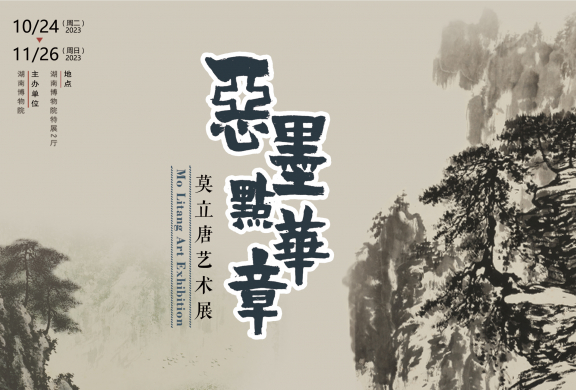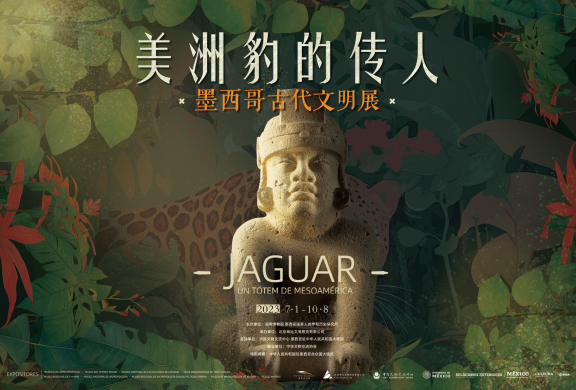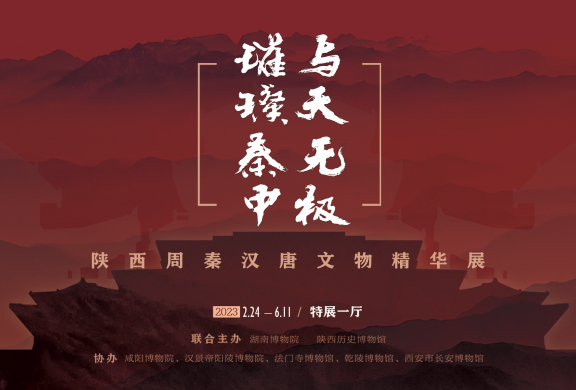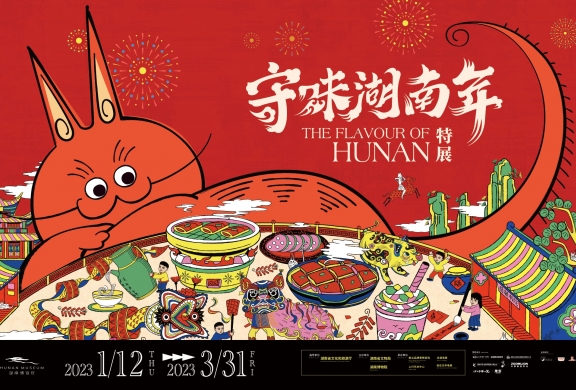Past Exhibitions
Mo Litang Art ExhibitionNo.2 Special Exhibition Hall, 1F 2023.10.24 - 2023.11.26 "There was once a man named Litang in Hunan province, who was not only talented but also modest”. As the founder of Hunan Artists Association, Mo Litang not only participated in the preparation of the association, but also served as the executive director of it for a long time, and then worked in Hunan Provincial Mass Art Museum (now Hunan Provincial Culture Centre), carrying out professional counselling for art cadres in the Hunan province. In the art of calligraphy and painting, he studied under the famous painter and art educator Gao Xishun. In Mo’s early years, he liked to depict the new appearance of his hometown with colourful ink. In the 1980s, Mo became a renowned painter of landscape painting in Hunan. In his later years, he specialised in calligraphy, and he created the “Axe Chopping Style”, which has a majestic atmosphere, and is a perfect complement to his painting. Strict and modest, Mo took “Sharpening your axe will not delay your job of chopping wood”as his motto, and after retirement, he still kept going back to the tradition, refining his heart and brushwork, and living in semi-seclusion in his own study, “Paddy Garden”, painting and practising calligraphy for his own amusement, thus forging the literati character in the eyes of others. As a representative of elder generation of Hunan artists, Mo had a deep affection for his hometown and has created many paintings concerning Hunan. He was one of the earliest artists who depicted the landscapes of Zhangjiajie and was famous for his description of strange and perilous mountains and rivers of Zhangjiajie. Its landscapes are the testing ground for his freehand brushwork paintings. Since the 1980s, he had been exploring the unique style of freehand landscapes with heavy ink and sharp brushwork by copying the stone springs and gullies of Zhangjiajie. A major feature of Mo’s painting is that it is grounded in solid sketching, and not only his landscapes, but also his highly refined flower and bird paintings, his vivid cavities and eagles, shelled chicks, etc. are the embodiment of his exclusive brushwork and in-depth observation. In the field of painting and calligraphy, Mr. Mo has spent his life’s work to pursue the saying of “bizarre ink makes brilliant painting”, and we believe that he has not only achieved it, but also finally formed his one-of-a-kind artistic style. Mo’s family donated more than 100 pieces of Mo’s paintings and calligraphy as well as his manuscripts to the Hunan Museum in 2022. These works have been incorporated into the collection system of Hunan Museum, which not only enriches the “Hunan Painting and Calligraphy Celebrity Collection”, but also extends the material of Hunan regional art history. It takes the donated works as the main body, shows his art talent from landscape painting, flower and bird painting, and calligraphy, and outlines the general lineage of his artistic development, which is the presentation of the result of the preliminary research of Mr. Mo’s art works. This exhibition pays tribute to Mr. Mo’s contribution, and we hereby express our thanks to his family for their generous donation! |
Jaguar-Un Totém De MesoaméricaNo.2 Special Exhibition Hall, 1st Floor 2023.07.01 - 2023.10.08 The ancient civilization of Mexico is renowned for its rich cultural heritage, profound historical charm, and unique style. Its cultural forms are diverse, interwoven, and influenced by each other. Among them, Omelt culture, Mayan culture, Teotihuacan culture, Aztecs culture, etc. Are the important central cultures of Mexico’s ancient civilization. The Jaguar, with its sacred character, is an important symbol in many Mexican cultures, reflecting the local religious concept, spiritual connotation and social outlook. This exhibition brings together 154 pieces (sets) of fine cultural relics collected by 9 Mexican cultural institutions, covering the period from 2300 BC to the 16th century. Taking "Jaguar" as the main line and cultural anthropology as the perspective, it explains the geographical environment (civilization created by water), production and lifestyle (hometown of corn), and spiritual beliefs (worship of Jaguar) of ancient Mexicans, and traces back to the ancient culture of Mexico in different periods, regions and ethnic groups, the audience will focus on the glorious and colorful ancient Mexican civilization, and reveal the extremely important role of Jaguar in the ancient Mexican social life. |
Wandering-Digital Art in Historical SpacetimeNo.1 Special Exhibition Hall, 1F 2023.06.28 - 2023.12.03 On the shore of the Xiangjiang River, the dream of eternal life unfolds. Bronze Ding with inscription “Dahe” and the splendid Chinese silk and brocade were discovered here. When Mawangdui Han Dynasty Tombs, Shang and Zhou bronzes, digital art and virtual world "collide", national treasures exhibit in an awesome way. The exhibition, "Wandering-Digital Art in Historical Spacetime", is an interdisciplinary and cross-media experiment of historical archaeology and digital art, starting from the ideas, concepts and methods of global digital art. It is also an academic, public, local and international project in the field of technology and art . The exhibition combines Hunan's history and the national treasures of the Hunan Museum, conducting a profound conversation and interpretation with digital art. From the ancient beliefs of the immortals to today's cross-temporal collision of the meta-verse, it is the interplay between ancient and modern civilizations, a cross-border interaction between modern and contemporary art and China's excellent traditional culture, and a tribute of modern technology to the great classical civilization. As the first international digital art exhibition held in Hunan, it covers the exhibited works of the most important global exhibitions such as Documenta, Venice Biennale and the Ars Electronica Festival in Linz, Austria. This is not only an important event for digital art display, education and research in China, but also an important summit for global digital art exchange. |
The Flavor of HunanNo.2 Special Exhibition Hall, 1F 2023.03.20 - 2023.05.07 China is the country of origin of tea, the tea exports have been recorded as early as the 6th century. On the 17th century, tea has surpassed silk and porcelain to become the largest export in the Qing Dynasty. As the bridge between Euraisa, Russia is not only the major tea consumer, but also considers reselling Chinese tea to the European market to be an important source of income. "The Tea Road" between China and Russia, which flourished from the 17th century to the early 20th century, has become another international trade route connecting Europe and Asia after the silk road. When President Xi Jinping visited Russia in 2013, he pointed out in his speech at the Moscow Institute of International Relations that "The Tea Road" is the "artery of the century" linking China and Russia. The "The Tea Road" starts from Wuyi Mountain in Fujian Province in the south, passes through Jiangxi, Anhui, Hunan, Hubei, Henan, Shanxi, Hebei and Inner Mongolia, to Moscow, St. Petersburg and other major cities in Europe. This tea road, which stretches for 10,000 miles through the East and West, is not only an economic corridor starting with the tea trade, but also an important cultural route, which has profoundly influenced the commerce, culture and lifestyle of various places along the way. In March 2019, "the Tea Road" was officially listed on the "Preparatory List of China's World Cultural Heritage" by the National Cultural Heritage Administration. As an important part of the "One Belt and Road" initiative, the historical and humanistic information carried by "the Tea Road" has highlighted its important cultural value. Through carrying out "the Tea Road" cultural heritage investigation, research, protection, and actively promoting the transnational joint application for the world cultural heritage, giving full play to the functions and roles of cultural relics departments, and making good use of cultural heritage resources, it will further realize the cultural exchanges, economic interconnection of countries along the route of China, Mongolia, Russia and Central Europe in the new period, and bring new vigor and vitality. |
Cultural Relics of Four Dynasties: Zhou, Qin, Han and TangNo.1 Special Exhibition Hall, 1F 2023.02.24 - 2023.06.11 Shaanxi, one of the significant birthplaces of the Chinese nation and one of the centers of the ancient world civilization, served as the capital for fourteen dynaties, including Zhou, Qing, Han and Tang. Shaanxi’s profound cultural heritage and historical accumulation have endowed it with an extraordinary rich cultural legacy, fostering highly developed material and spiritual civilizations, and composing the most glamorous chapter of Chinese civilization. This exhibition gathers 120 sets of ancient cultural relics from various institutions such as Shaanxi History Museum, Xianyang Museum, Han Yangling Museum, Famen Temple Museum, Qianling Museum, and Chang'an Museum. Guided by the timeline and centered on the cultures of Zhou, Qin, Han, and Tang, the exhibition unfolds brilliant chapters of Shaanxi's history, showcasing the essence of thought and cultural elegance carried by these four dynasties during the process of civilization development. The exhibition highlights the national spirit and cultural confidence of the Chinese nation, characterized by virtues, diligence, inclusiveness, and innovation, vividly presenting the glorious epochs in Chinese history. History may be distant, but it is not illusory, and relics may be silent, but they can tell stories. Hunan Museum sincerely invites the audience to traverse through thousands of years of time, experience the splendid memories of ancient China, and immerse themselves in the rituals of Zhou, the governance of Qin, the culture of Han, and the charm of Tang, share the dreams and glory of the past. |
The Flavor of HunanArt Hall, 1F 2023.01.11 - 2023.03.18 The Spring Festival is the most solemn traditional festival of the Chinese nation. Taking the Spring Festival as an opportunity, the special exhibition "the Flavor of Hunan" invites the audiences to gather at the Hunan Museum to experience the customs, sceneries and local specialties of Hunan and share the taste of the Spring Festival. The Hunan Museum,with its abundant collection of cultural relics resources, brings cultural relics alive and connects history with the present through the scene experience of juxtaposition of ancient and modern times and comparison of time and space. The design of the lacquer plate, a leopard cat, excavated from Mawangdui in the Western Han Dynasty is the image ambassador of this exhibition. It travels from ancient to modern times, travels all over Hunan province, and explores the unique taste of Hunan’s new year. From the family banquet of sitting on the ground and eating separately in Western Han Dynasty to the round table dinner of the New Year’s Eve these days, the exhibition focuses on telling the Hunan’s and China’s stories behind the cultural relics and local sceneries. |








